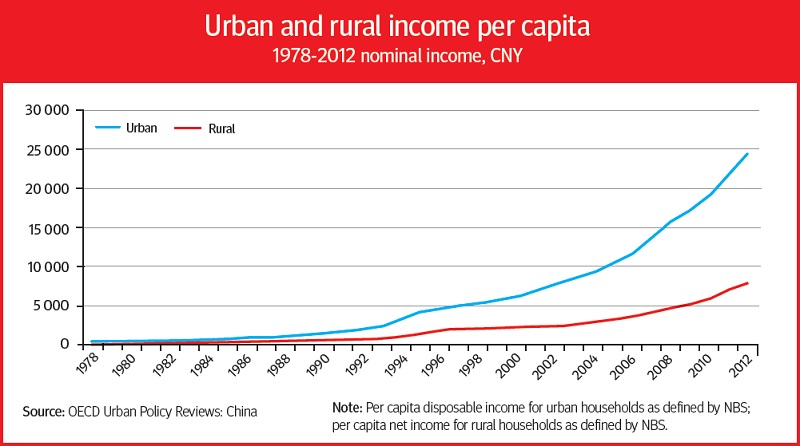China's urban-rural divide

Income inequality between China’s rural and urban areas has surged in recent years. The per capita income of urban households in 2012 was about three times that of the rural households, whereas in 1978 it was about two and half times higher.
This widening inequality has taken place against a backdrop of rapid growth in both urban and rural incomes, as well as in a sharp increase of the share of the urban population. The income gap fell sharply in the early years of reform, when the rural sector was then the primary focus of policy. But as the economy opened up and expanded, the urban-rural income gap began to rise again, though it fell back again in 2009-12.
The hukou system is one explanation for the large urban-rural income gaps in China because it restricts the ability of workers to move from poor rural areas to more productive urban regions. Moreover, easy access to the already densely populated coastal areas for trade and jobs, as well as the country’s industrial policy, favoured faster urbanisation in eastern China, while boosting living standards in that region.
Caution is needed in assessing the full extent of these trends, not least owing to the difficulty of capturing migrants’ earnings, and because of the unclear boundaries between urban and rural areas, with some densely built up places around cities still classed as rural. Moreover, the available data do not take into account the cost of living or income subsidies, both of which are higher in urban areas.
See more at: www.oecdobserver.org/cities
